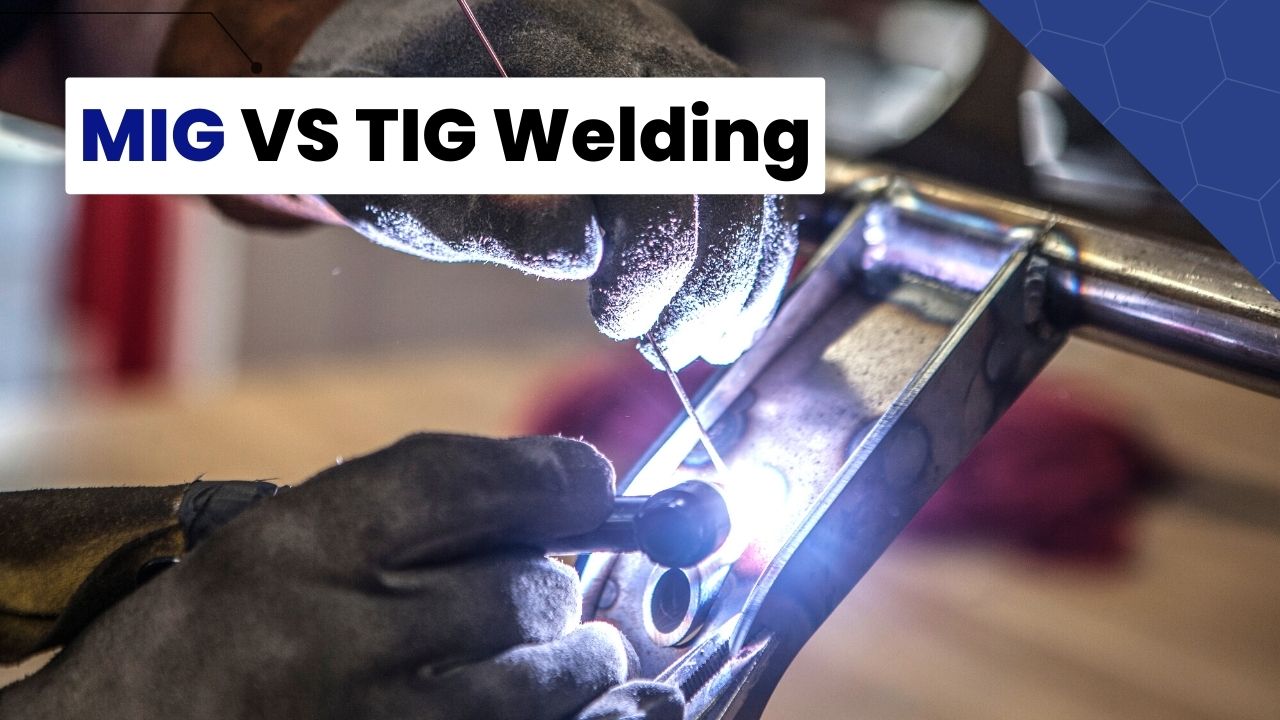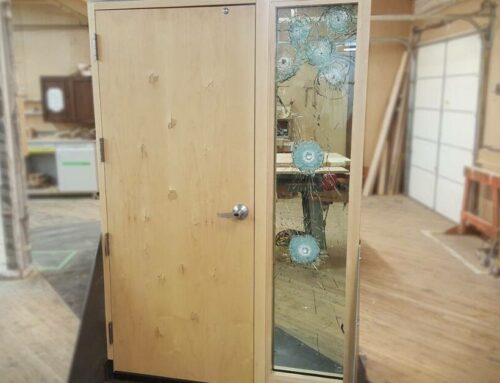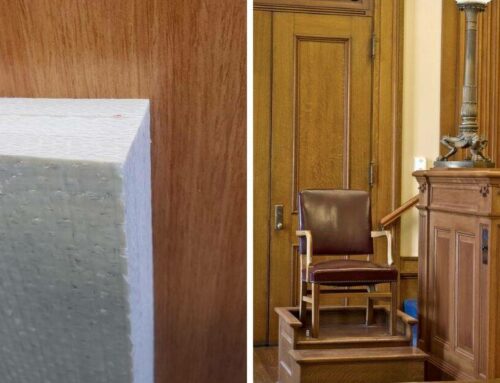The Difference Between MIG and TIG Welding
Welding is a broad field with many types of welding processes that differ in functionality and application. Since different metals require different techniques and materials, some welding processes will be more suited for specific applications than others.
The arc welding processes are the most prominent, especially metal inert gas welding (MIG) and tungsten inert gas welding (TIG), because of their welding quality, production efficiency, and other benefits.
While both processes use an electric arc and electrical resistance to create the weld, they differ in various ways. These include the welding process, the equipment used, the quality of the weld, the types of metals that can be used, speed, cost, and how difficult it is to learn the technique.
Knowing the unique characteristics of each process will help you choose which one is best suited for your needs.
What is MIG welding?
Also known as gas metal arc welding (GMAW), metal inert gas (MIG) welding uses a consumable wire electrode that creates an electric arc and melts to form the filler.
The consumable electrode is available in different materials, including mild and nickel steel, and diameters. The type of electrode you choose will depend on the materials you need to join, their properties, including their thickness, and the configuration of the joint you wish to weld.
A shielding gas protects the weld pool against oxidation and contamination. Depending on the application, you can use carbon dioxide, argon, helium, or a mixture of these gases.
For example, you might use a 75% argon and 25% carbon dioxide mixture for welding carbon steel. Using 100% carbon dioxide allows deeper filler penetration for thicker metals, while using 100% argon is excellent for working with aluminum.
The process is semi-automatic or automatic because a continuous consumable wire electrode is fed through the welder’s gun at a preselected constant speed.
Note: The first thing to do before any welding process is to thoroughly clean the metal surfaces you need to join. Dirt prevents the filler from adequately adhering to the metal, reducing its effectiveness.
Advantages of MIG welding
-
-
- It is a straightforward process, which makes it the easiest to learn.
- Its semi-automatic or automatic features allow welders to operate at a continuous rate, making faster welding speeds and longer production runs possible. This feature also helps save time and a lot of hassle.
- It works for virtually all metal surfaces.
- Depending on the experience level of the welder, neat welds are possible, with little post-welding cleaning needed.
-
Disadvantages of MIG welding
-
-
- It is more difficult to do outdoors because the shielding gases do not perform well outside.
- Different metals require different consumable wires and gases.
- It is not environmentally friendly, and it produces smoke and fumes.
-
What is MIG welding used for?
MIG welding is a fast, efficient, and easy process perfect for most applications. It is suitable for home improvement and automotive applications, as well as metal component repairs, automotive and manufacturing projects, underwater welding projects, railroad track repair, trailer hitches, farm equipment, construction welding, pipe welding, and shipbuilding.
What is TIG welding?
Tungsten inert gas (TIG) welding, also known as gas tungsten arc welding (GTAW), uses a nonconsumable electrode made of tungsten to create an electric arc. The arc then generates the heat needed to join the metal together.
Since the electrode is nonconsumable, a filler may not be necessary. If a filler is required, it is supplied separately and fed manually by the welder into the weld pool. However, the TIG method is most suitable for autogenous welding, which doesn’t require filler metal.
TIG welding also employs an inert shielding gas (100% argon) to protect the hot weld bead from oxidation and contamination. It does not work well with any carbon dioxide mixtures because the carbon dioxide will affect the tungsten electrode.
Advantages of TIG welding
-
-
- It provides the cleanest, most aesthetically pleasing work possible.
- It grants the welder good control over the weld, allowing for precision and more robust, higher-quality welds.
- It is more environmentally friendly.
- Since it uses nonconsumable electrodes, it has lower maintenance and operational costs.
-
Disadvantages of TIG welding
-
-
- Learning the process is more challenging because it demands the simultaneous use of both hands and a foot. It also requires great skill and patience.
- Since it is not automatic and requires the manual feeding of the filler material, it can be significantly slower.
- It is more expensive.
-
What is TIG welding used for?
Because it produces a clean, beautifully crafted weld, it is the clear choice for applications where details matter, including artwork, ornamental designs, many stainless steel items, and some automotive applications.
TIG welding is also growing in popularity across more prominent industries that require precision parts and equipment, such as pipelines and pipe welding, transportation, aviation, aerospace, and the military.
Differences between MIG and TIG welding
| MIG welding | TIG welding | |
|---|---|---|
| Metal selection | Suitable for various metals, including aluminum, carbon steel, and stainless steel. It is, however, a better process for thick metal sheets up to 40 mm. | Also suitable for many metals but is a better process for thin metal sheets up to 5 mm. |
| Electrode | Utilizes a consumable electrode that creates the electric arc and melts to form the filler. | Utilizes a nonconsumable tungsten electrode that doesn’t melt during the welding process. |
| Filler metal | The electrode acts as the filler metal. It is suitable for homogeneous welding. | The process can work with or without filler metals. If needed, the filler metal is supplied separately by hand. Without the filler, it is suitable for autogenous welding. Supplying additional filler makes it ideal for either homogeneous or heterogeneous welding. |
| Filler deposition rate | The deposition rate is high, making the process highly productive. | It has a low filler deposition rate. |
| Shielding gas | Argon, helium, or carbon dioxide (CO2), but gas mixtures such as argon mixed with CO2 are also standard.
The gas flow rate is typically 35 to 50 cubic feet per hour. |
Normally uses 100% argon.
The gas flow rate is typically 15 to 25 cubic feet per hour. |
| Welding gun or torch | Uses air-cooled or water-cooled welding torches. Air-cooled torches are less effective but lighter and cheaper. Water-cooled torches are more suitable for heavy-duty work because water is a better coolant. | Water-cooled torches are more frequently used because they help maintain higher welding temperatures. |
| Welding quality | [Good quality weld depending on the technician. Best suitable for areas that are hidden from plain eyesight within assemblies. | This welding technique produces a high-quality weld because it allows the welder greater control over the surface area. Most sheet metal fabricators use TIG welding because it offers a clean and beautiful finish along the weld line. |
| Weld strength | When done correctly, the strength often meets or exceeds the strength of the base metal; however, MIG welds are more prone to defects, which can weaken a weld. | TIG welders produce a narrow, focused arc better at penetrating the metal. When correctly done, TIG welds are stronger. |
| Weld speed | MIG allows for a continuous rate of operation, which can result in better speed and longer production runs. | TIG is much slower since welders cannot move the weld pool and cannot supply filler rods as quickly as they can in MIG welding. Also, it requires a high level of detail, which can slow the process down. |
| Power source and polarity | Typically uses a constant-voltage, DC power source for the welding. | It can use an AC or DC power source. The AC power source is suitable with aluminum material, while DC works best when stronger electric arcs are needed. |
| Weld aesthetics | Not always aesthetically pleasing, especially if it is not done correctly. | More aesthetically pleasing, as properly created beads are clean and professional in appearance. |
| Difficulty to learn | Relatively easy to learn since the process is straightforward. | The welds are more complex to execute, which takes time to learn. |
| Cost | Cheaper compared to TIG welding. | TIG is more expensive because of the aggregation of parts. Also, high detailing requires more time, driving the electricity cost up. |
When to use TIG and MIG welding
MIG applications
-
-
- Thicker stock: MIG welding is suitable for welding thicker pieces of metal because it uses a filler material.
- Long production runs: MIG can handle longer production runs because it’s easier to manage and offers better speed with its continuously-fed wire.
- Difficult positions: Since you only need one hand to operate the welding gun, you can use the other hand to better place the pieces of metal you are working on.
- Less experienced welders: MIG welding is suitable for use by welders without much technical knowledge.
-
TIG applications
-
-
- Thin Material: TIG welding is a suitable method for welding thinner metals due to its precision, accuracy, and better operational control.
- Experienced welders: TIG welding is a three-part process, requiring strong hand-eye and hand-foot coordination for more precision when controlling the heat. It’s a delicate technique that requires practice and patience, and only experienced welders can do the job.
- Non-ferrous metals: While it will not work on cast iron, experienced welders prefer TIG for metals like aluminum, stainless steel, copper, and other, more exotic metals.
- Short runs: TIG welding is suitable for shorter production runs because it is a much slower process. When used for longer production runs, it becomes more complex and more costly.
-
How can CFI help?
Choosing between MIG and TIG welding can be a challenge. Our experts, including fully certified welders well-versed in both MIG and TIG welding processes, can help you make the right choice. We also offer precision metal manufacturing and custom-fabricated steel parts.




